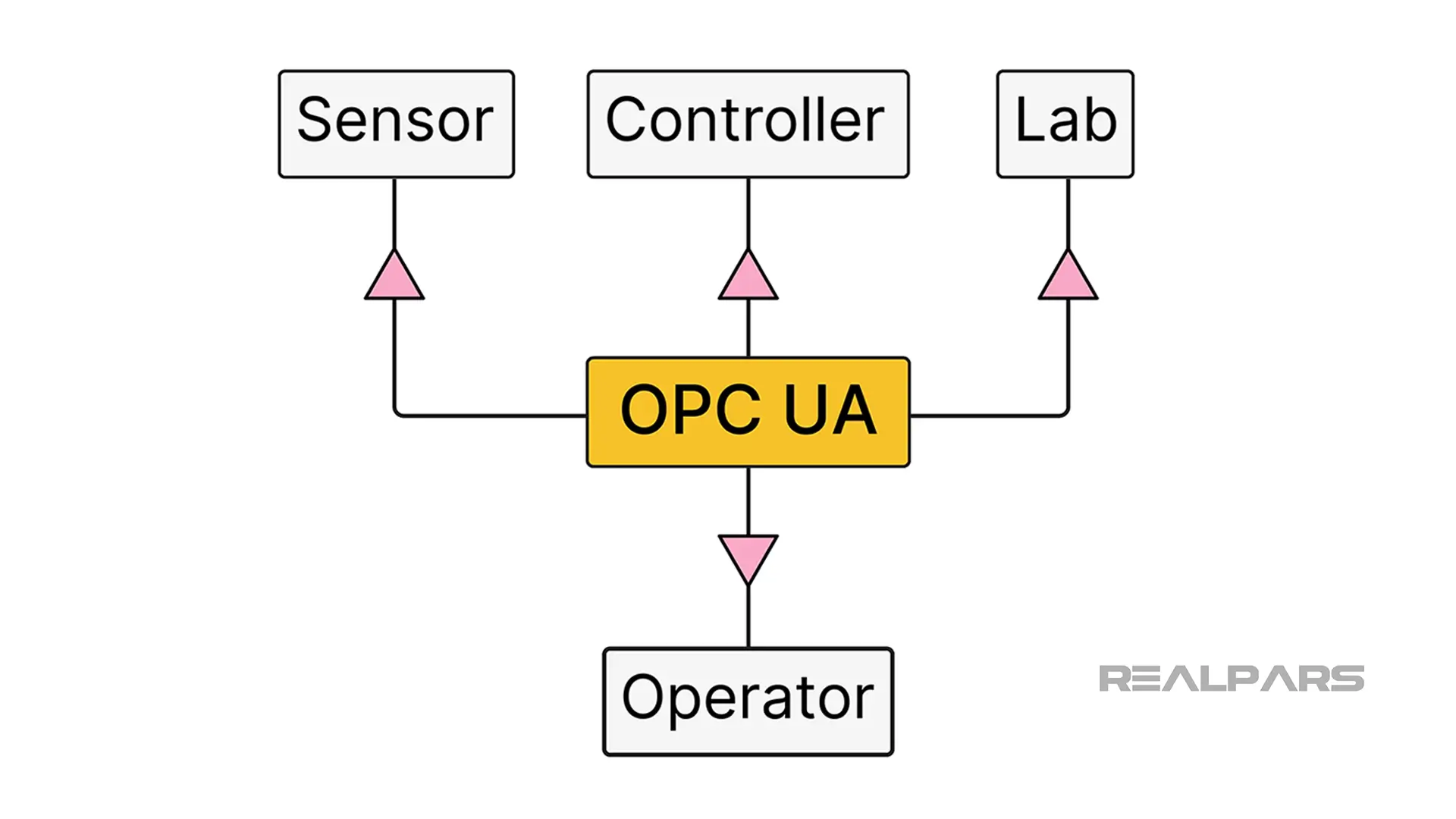OPC-UA Application - Food and Beverage


Introduction
In a previous article, I covered the ABCs of OPC Unified Architecture, or OPC-UA, and described how this TCP/IP-based protocol allows automation engineers to share data at the control system level in real-time with high reliability and efficiency.
Now, I will show how OPC-UA can provide benefits to the dairy industry in the milk production process.
Before I begin this OPC-UA case study, you might be wondering how you get up to speed on OPC-UA and more fully understand its benefits. There is an amazing RealPars course, OPC-UA: Learn the Basics, that offers comprehensive lessons on this topic. Check it out!
In the food and beverage industries, including dairy, the collection of process data is a key component of the manufacturing process.
These data also provide proof that good manufacturing practices were followed and that the critical parameters of the product fall within strict guidelines.
Sensors
Many different sensors are used in milk production facilities to ensure quality and flavor. Platinum Resistance Thermometers, called RTDs, are used within pasteurization processes due to their high accuracy and stability over time.
Pasteurization requires raw milk to be heated to specific temperatures to kill harmful bacteria that may be found in the raw milk.
Regulations require a temperature of 72 ℃ to be reached and held for 15 seconds, enough to kill any bacteria. Even slight deviations from these parameters can render the milk product unsafe or ruin its taste.

A common way to reach these parameters is to flow the raw milk through an HTST, a high-temperature, short-time, heat exchanger. The exchanger is heated to 72 ℃ and is sized so that the milk at the intended flow rate has a residence time of exactly 15 seconds.
If the temperature is too high or if the milk remains at an elevated temperature for too long, scalding or protein breakdown may occur. If the temperature is too low or if the milk does not reach the pasteurization temperature, the milk may not be fully pasteurized.

To measure flow rates, turbine or electromagnetic flow meters are used since they are able to perform well considering the viscous nature of the milk.
Because these flow meters do not cause large restrictions in the pipe, they do not cause undue mechanical stresses on the structure of the milk fats and proteins.
Turbine and electromagnetic flow meters have virtually no pressure drop and are easily sanitized.
pH sensors help the control system maintain the milk's acidity levels within acceptable ranges, thereby improving shelf life, consistency, and flavor.
Equipment
Equipment also plays a vital role in milk production. Plate and Frame heat exchangers are commonly used in milk production for heating, as described with the HTST, and for cooling.
Plate and frame heat exchangers consist of multiple, thin, separated plates, and enable the milk to be spread out and to heat or cool uniformly and at the same rate.

OPC-UA configuration
OPC-UA is the ideal communication method for amalgamating data from multiple sources, such as sensors, controllers, lab analysis equipment, and operator entries. This holistic view is crucial for quality assurance.

With its ability to integrate these data from all sources, it truly is the maestro in the orchestra of production, OPC-UA allows the system to be proactive, delivering the right data at the right time to the right places.
Critical parameters that can be collected through OPC-UA connections from these various data sources include flows, pH, temperature, fat yield, fat percentage, protein yield, and protein percentage.
OPC-UA plays a key role in adaptive feedback loops integrated into Programmable Logic Controllers. These advanced control schemes can monitor the milk product at every stage of production and initiate corrective actions before quality parameters are violated.
For instance, if the temperature at the outlet of the HTST drifts, the system can use the milk flow rate to calculate the appropriate adjustment to the heat exchanger's heat input.

A key regulatory requirement is traceability. The power of OPC-UA to collect and time stamp each piece of sensor data can be used to track the exact pasteurization heating cycle which would be beneficial in quality audits or should a recall become necessary.
OPC-UA is fortified with advanced encryption methods and strict access controls. These security features are critical to maintaining food safety and to maintaining regulatory compliance.
And given strict requirements of food safety, OPC-UA provides an impregnable fortress fortified with encryption and strict access controls that ensure the milk stays pure in taste and in data too.
Milk production facilities are subject to 21 CFR Part 11, which places requirements on manufacturers for data integrity and safety. OPC-UA is built to support these requirements.
Summary
You should now have a more profound understanding of the milk pasteurization process and the pivotal role OPC-UA plays in ensuring quality and safety.
If you're eager to dive deeper and truly master more of these OPC-UA concepts, don't forget to check out OPC-UA: Learn the Basics.
This course will provide you with a comprehensive understanding, along with practical exercises to solidify your knowledge. Thank you for your time, and happy learning!
To summarize, OPC-UA streamlines the collection of data in the dairy industry by ensuring interoperability, data integrity, and secure communication between diverse devices and systems, driving enhanced productivity and compliance in milk production.
Learn from Industry Experts
With a 7-day trial, then €25/month


